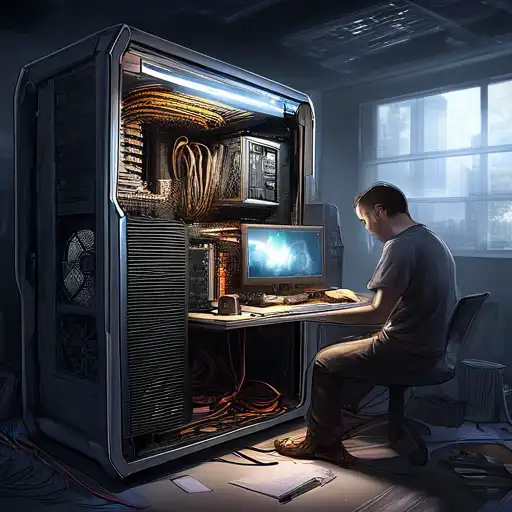Introduction to PC Building
Building your own PC can be a rewarding experience, offering not only a sense of accomplishment but also the opportunity to customize your machine to your exact needs. Whether you're a gamer, a content creator, or just someone looking for a powerful workstation, assembling your own computer allows you to select each component for performance, aesthetics, and budget.
Why Build Your Own PC?
There are several advantages to building your own PC, including cost savings, the ability to upgrade easily, and the satisfaction of creating something unique. Plus, you'll gain a deeper understanding of how your computer works, which can be invaluable for troubleshooting and future upgrades.
Essential Components for Building a PC
Before you start, it's important to understand the key components you'll need:
- Processor (CPU): The brain of your computer, responsible for executing instructions.
- Motherboard: The foundation that connects all components.
- Memory (RAM): Temporary storage for data that your CPU needs quick access to.
- Storage (SSD/HDD): Where your operating system, applications, and files are stored.
- Graphics Card (GPU): Essential for gaming and graphic-intensive tasks.
- Power Supply (PSU): Powers all components of your PC.
- Case: Houses all your components and protects them.
Choosing the Right Parts
Selecting compatible components is crucial. Research each part to ensure they meet your needs and work well together. Websites like PCPartPicker can help you check compatibility and find the best deals.
Step-by-Step Guide to Building Your PC
Now that you have all your components, it's time to start building. Follow these steps to assemble your PC:
- Prepare your workspace with all necessary tools and components.
- Install the CPU, RAM, and storage onto the motherboard.
- Mount the motherboard inside the case.
- Install the power supply and connect it to the motherboard and other components.
- Add the graphics card if you're using one.
- Connect all cables, ensuring everything is securely attached.
- Power on your PC and install the operating system.
Tips for First-Time Builders
Building a PC can seem daunting, but with patience and careful attention to detail, anyone can do it. Here are a few tips to help you along the way:
- Watch tutorial videos to familiarize yourself with the process.
- Keep your workspace organized to avoid losing small parts.
- Don't force components into place; if something doesn't fit, double-check the orientation.
- Use cable ties to manage wires for better airflow and aesthetics.
Final Thoughts
Building your own PC is an exciting project that can save you money and give you a machine tailored to your needs. With the right preparation and components, you'll be able to enjoy the fruits of your labor for years to come. Remember, the PC building community is vast and supportive, so don't hesitate to seek advice if you're unsure about something.
For more information on selecting components, check out our Guide to Choosing PC Components.
